Locus Coeruleus as a vigilance centre for active inspiration and expiration in rats
- PMID: 30353035
- PMCID: PMC6199338
- DOI: 10.1038/s41598-018-34047-w
Locus Coeruleus as a vigilance centre for active inspiration and expiration in rats
Abstract
At rest, inspiration is an active process while expiration is passive. However, high chemical drive (hypercapnia or hypoxia) activates central and peripheral chemoreceptors triggering reflex increases in inspiration and active expiration. The Locus Coeruleus contains noradrenergic neurons (A6 neurons) that increase their firing frequency when exposed to hypercapnia and hypoxia. Using recently developed neuronal hyperpolarising technology in conscious rats, we tested the hypothesis that A6 neurons are a part of a vigilance centre for controlling breathing under high chemical drive and that this includes recruitment of active inspiration and expiration in readiness for flight or fight. Pharmacogenetic inhibition of A6 neurons was without effect on resting and on peripheral chemoreceptors-evoked inspiratory, expiratory and ventilatory responses. On the other hand, the number of sighs evoked by systemic hypoxia was reduced. In the absence of peripheral chemoreceptors, inhibition of A6 neurons during hypercapnia did not affect sighing, but reduced both the magnitude and incidence of active expiration, and the frequency and amplitude of inspiration. These changes reduced pulmonary ventilation. Our data indicated that A6 neurons exert a CO2-dependent modulation of expiratory drive. The data also demonstrate that A6 neurons contribute to the CO2-evoked increases in the inspiratory motor output and hypoxia-evoked sighing.
Conflict of interest statement
The authors declare no competing interests.
Figures
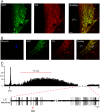
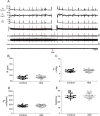
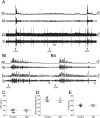
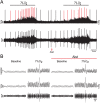
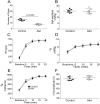
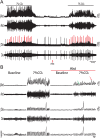
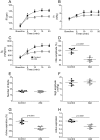
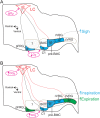
Similar articles
-
A6 neurons simultaneously modulate active expiration and upper airway resistance in rats.Exp Physiol. 2020 Jan;105(1):53-64. doi: 10.1113/EP088164. Epub 2019 Nov 20. Exp Physiol. 2020. PMID: 31675759
-
Non-chemosensitive parafacial neurons simultaneously regulate active expiration and airway patency under hypercapnia in rats.J Physiol. 2017 Mar 15;595(6):2043-2064. doi: 10.1113/JP273335. Epub 2017 Feb 1. J Physiol. 2017. PMID: 28004411 Free PMC article.
-
Participation of locus coeruleus in breathing control in female rats.Respir Physiol Neurobiol. 2017 Nov;245:29-36. doi: 10.1016/j.resp.2017.06.008. Epub 2017 Jul 4. Respir Physiol Neurobiol. 2017. PMID: 28687484
-
The parafacial respiratory group and the control of active expiration.Respir Physiol Neurobiol. 2019 Jul;265:153-160. doi: 10.1016/j.resp.2018.06.010. Epub 2018 Jun 19. Respir Physiol Neurobiol. 2019. PMID: 29933053 Review.
-
Ventilatory strategy in hypoxic or hypercapnic newborns.Biol Neonate. 1994;65(3-4):198-204. doi: 10.1159/000244053. Biol Neonate. 1994. PMID: 8038283 Review.
Cited by
-
Keeping the Breath in Mind: Respiration, Neural Oscillations, and the Free Energy Principle.Front Neurosci. 2021 Jun 29;15:647579. doi: 10.3389/fnins.2021.647579. eCollection 2021. Front Neurosci. 2021. PMID: 34267621 Free PMC article. Review.
-
Comparative brain-wide mapping of ketamine- and isoflurane-activated nuclei and functional networks in the mouse brain.Elife. 2024 Mar 21;12:RP88420. doi: 10.7554/eLife.88420. Elife. 2024. PMID: 38512722 Free PMC article.
-
Hyperexcitability and plasticity induced by sustained hypoxia on rectus abdominis motoneurons.J Physiol. 2019 Apr;597(7):1935-1956. doi: 10.1113/JP277030. Epub 2019 Feb 28. J Physiol. 2019. PMID: 30747446 Free PMC article.
-
Cell death in the lateral geniculate nucleus, and its possible relationship with nicotinic receptors and sudden infant death syndrome (SIDS).Mol Neurobiol. 2023 Jul;60(7):4120-4131. doi: 10.1007/s12035-023-03332-9. Epub 2023 Apr 11. Mol Neurobiol. 2023. PMID: 37041306 Free PMC article.
-
Targeting α1- and α2-adrenergic receptors as a countermeasure for fentanyl-induced locomotor and ventilatory depression.Environ Toxicol Pharmacol. 2024 Sep;110:104527. doi: 10.1016/j.etap.2024.104527. Epub 2024 Aug 4. Environ Toxicol Pharmacol. 2024. PMID: 39106924
References
-
- Lindvall O, Bjorklund A. The organization of the ascending catecholamine neuron systems in the rat brain as revealed by the glyoxylic acid fluorescence method. Acta Physiol Scand Suppl. 1974;412:1–48. - PubMed
Publication types
MeSH terms
Substances
Grants and funding
LinkOut - more resources
Full Text Sources

